Xeric or Mesic: How can you tell?
The color, texture, and leaf shape of your air plant can give you some clues as to whether it’s a more Mesic or Xeric plant.
Mesic plants tend to:
- Have darker green leaves
- Have smooth leaves with little appearance of trichomes
- Often will have leaves that are tightly curled or cupped.
Semi Mesic plants:
- Have bright green leaves
- Have less abundance of trichomes but may show some
Xeric Air plants:
- Have silvery leaves
- Often have flat leaves that can soak up the sunlight
- Often display an abundance of fuzzy trichomes.
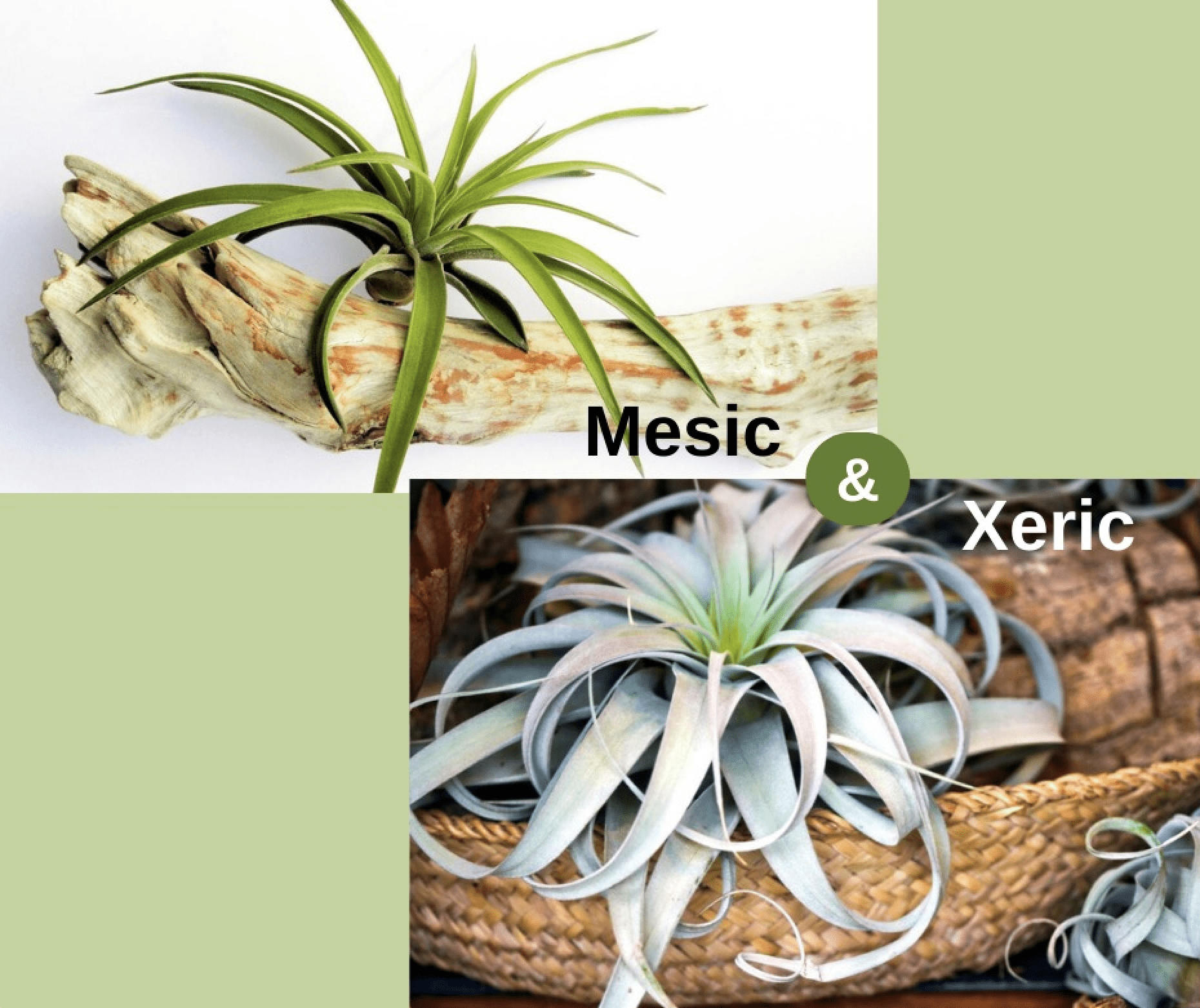
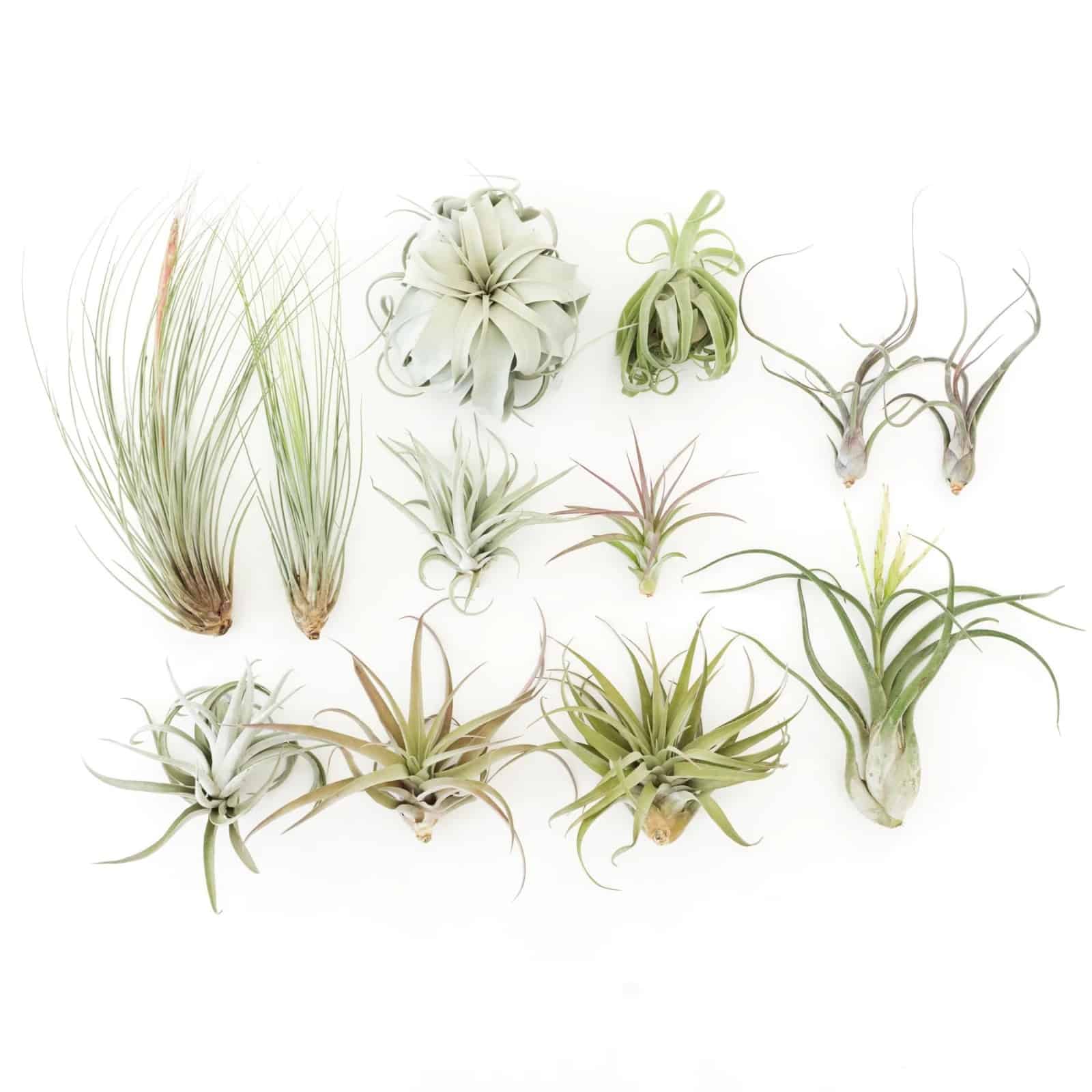
Tillandsia
Tillandsia are members of the Bromeliad family. They are epiphytes that use their roots to cling harmlessly to surfaces such as trees and rocks for support, instead of using them to absorb nutrients.
Commonly known as air plants, there are two types: mesic and xeric.
The first come from tropical rainforest regions where moisture is abundant, and the second, from dry desert climes.
Brachycaulos
The flat green leaves of xeric T. brachycaulos are a bright mid-green, and resemble those that emerge from the top of a pineapple.
The foliage may have a purple or red cast, and grows in a telescoping fashion to heights of eight to 10 inches.
Upon blooming, the foliage blushes magenta-red, and erect purple blossoms appear.

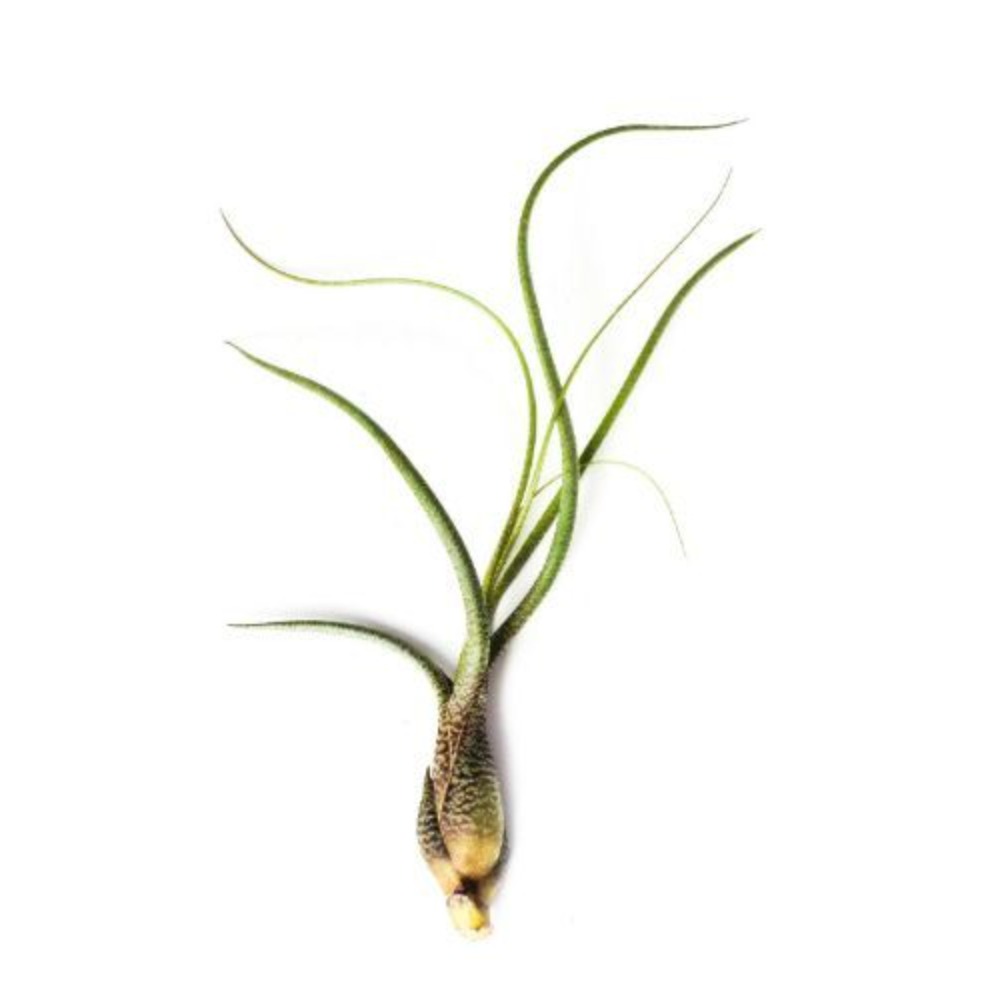
Butzii
Resembling a little squid, the distinguishing feature of mesic T. butzii is the mottling on its tentacle-like green leaves.
The T.butzii has green leaves that are spotted with dark and light green spots, and a bulbous base. It can grow to be about 8-10 inches tall and emits an red inflorescence when in bloom that blooms bright purple flowers. Pups will grow out from the base of the butzii, and if left to grow, can form a pretty impressive clump over time.
Bulbosa
Mesic T. bulbosa has fleshy, dark green leaves that resemble the squiggly tentacles of an octopus.
They protrude from a base that resembles a layered onion, and may reach heights of 8 to 18 inches.
When flowering, the upper leaves turn red, and from their center, a small-statured red bract emerges that contains a purple-petaled blossom.
An unusual feature of this plant is that in the wild, it exists in symbiosis with ants that make their home in its hollow bulb-like stem bases.
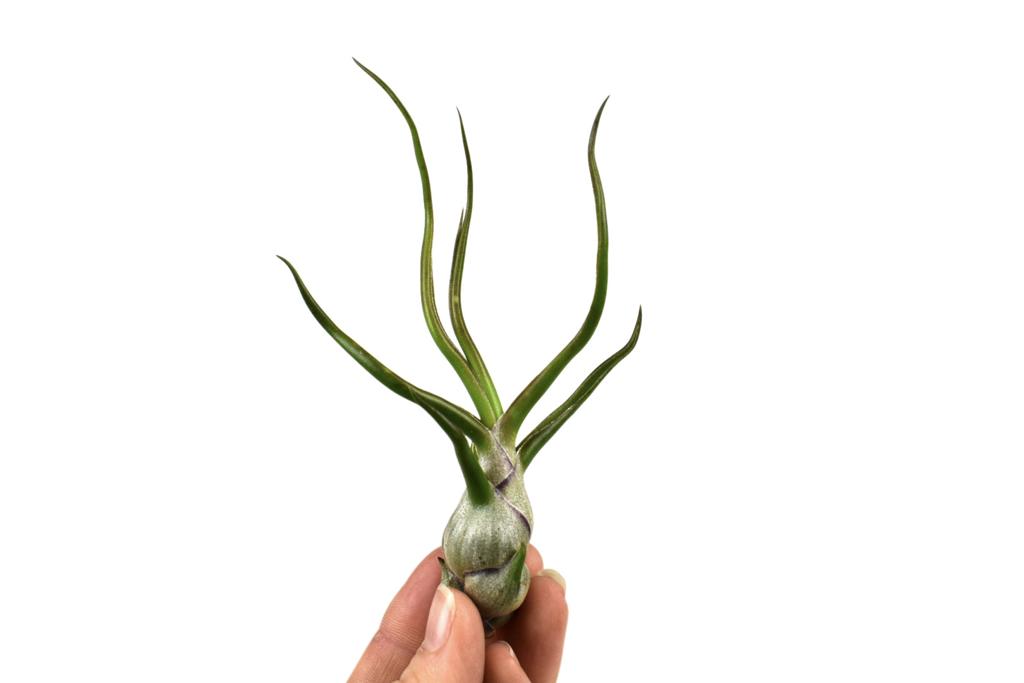

Caput medusae
The T. caput medusae air plant is native to Central America and Mexico, where they grow on tree branches located in areas of strong sun. This fuzzy looking Tillandsia is silvery green in color with hues of purple throughout the base extending up towards the leaves. Most caput medusae are green while some varieties like the rare Sonoran Snow Caput take on a more frosted white appearance due to an abundance of trichomes.
Cyanea


Funckiana
The T. funckiana is a caulescent air plant species meaning that its leaves grow upwards along its stem instead of branching out. These Tillandsia are found in the wild dwelling on cliffs in the Andes and Venezuela. The funckiana resembles a pine branch, with soft pine needle like leaves. You may see some that grow straight, while others grow in a twisting and turning fashion.
The cool thing about the T. funckiana is that they produce many pups along the stem and clump easily. These are beautiful displayed in a hanging cluster that shows off their vibrant blooms.
To care for the T. funckiana make sure that it receives ample sunlight and water once a week. Fertilization with help to promote blooming and pup formation. Soon, you may have a beautiful clump of funckiana plants to hang!
Ionantha

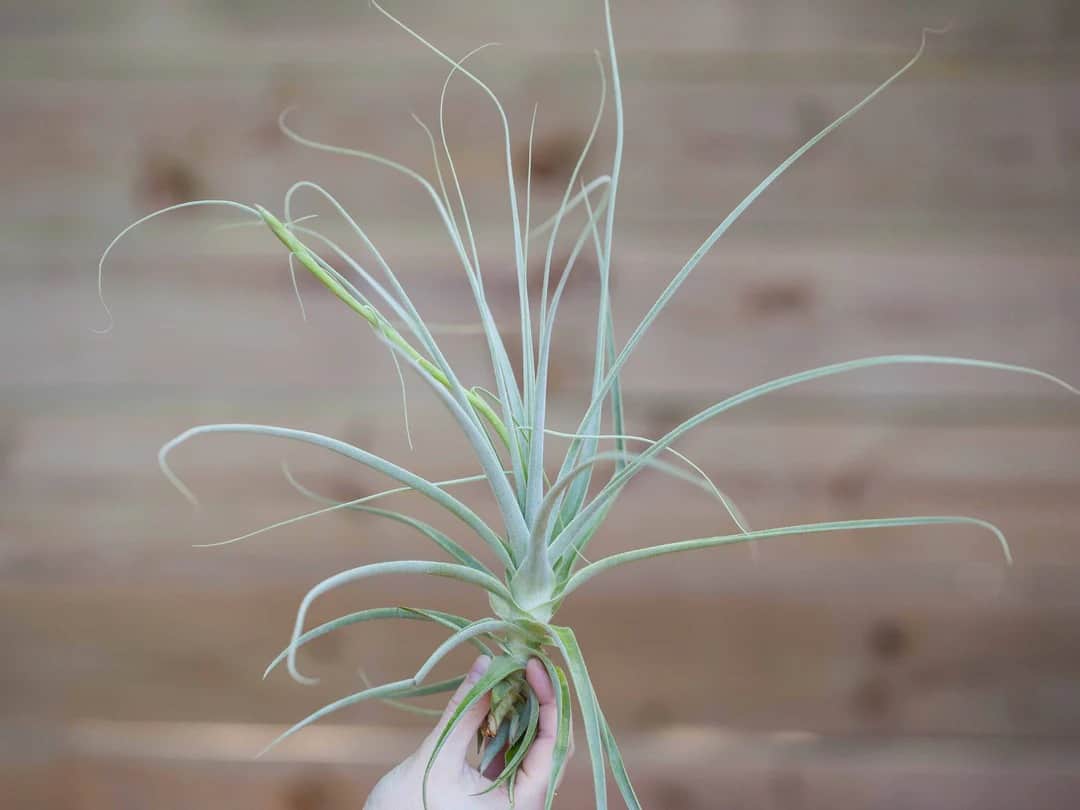
Straminea
Native to Peru and Ecuador, the Tillandsia Straminea is a very striking plant. These plants can grow to be quite large and will grow into a very impressive clump over time.
The Tillandsia straminea has velvety soft silvery green leaves. Take care when moving or transporting this plant, it leaves are very delicate and can be broken quite easily. It is a xeric plant, so it will thrive in areas of low humidity and drier overall conditions. These plants also prefer more sun than the majority or air plants. We recommend misting rather than soaking these dry-loving plants.
One of the most intriguing and unique things about the Tillandsia straminea is that it is one of the few air plants that produce highly scented flowers when in bloom. These blooms are white and purple flower bracts that emit from a beautiful inflorescence.
Streptophylla
Nicknamed the Shirley Temple due to its curling leaves, the Tillandsia streptophylla is a stunning xeric air plant. Native to Central America, Mexico, and the West Indies, it thrives in low humidity areas due to its abundance of trichomes.
The T. streptophylla has soft pastel green leaves and is quite fuzzy due to the dusting of trichomes along its leaves. The word “streptophylla” means “with twisted leaves.” The drier the conditions are, the more curly this plant will be, and its leaves will curl into tight ringlets (like Shirley Temple’s iconic hair)
Due to the fact that these plants are xeric species, they prefer more sun and less frequent waterings than many air plant varieties. We recommend dunking or misting the T. streptophylla instead of soaking as water can get trapped in its pseudobulb (meaning that its bulbous base is hollow) and cause the plant to rot. Always shake out any excess water when watering any air plant. After blooming, these plants will use their remaining energy to produce offsets or pups.
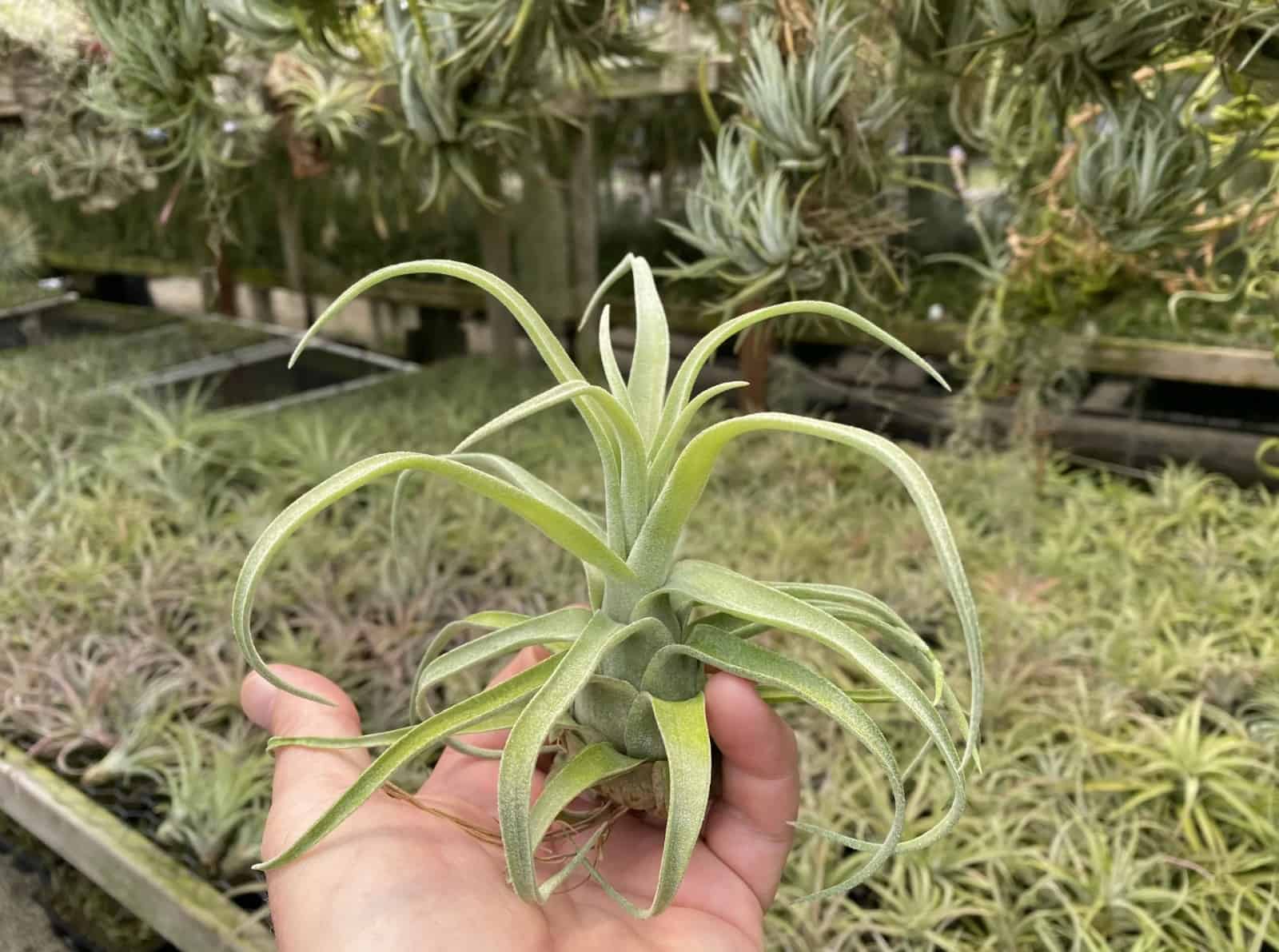

Andreana
Tillandsia are members of the Bromeliad family. They are epiphytes that use their roots to cling harmlessly to surfaces such as trees and rocks for support, instead of using them to absorb nutrients.
Commonly known as air plants, there are two types: mesic and xeric.
The first come from tropical rainforest regions where moisture is abundant, and the second, from dry desert climes.
Usneoides (Spanish Moss)

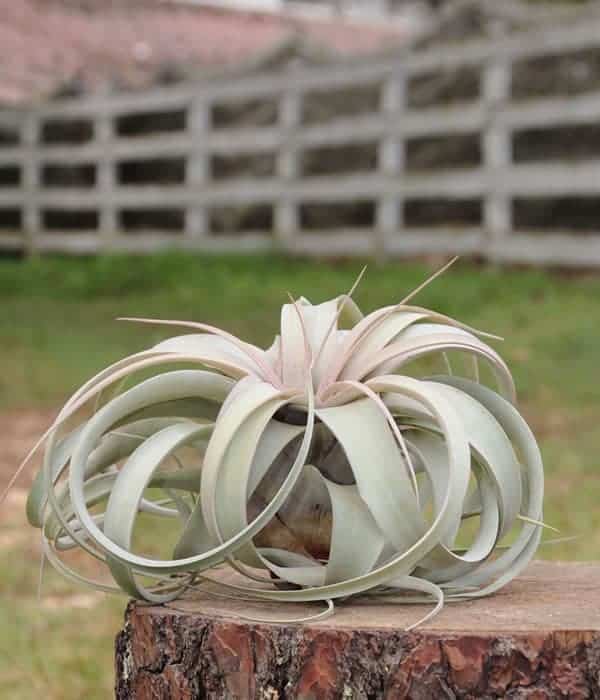
Xerographica
Tillandsia Xerographica is an extremely popular air plant among plant enthusiasts. These plants have a distinct look, so it is easy to tell them apart from other air plant species. Xerographica are characterized by silver, curled leaves that contribute to the plant’s spherical shape, and their slow growing habits make them a great plant for owners to maintain and watch them thrive. Its name comes from Greek words “xero” and “graphica,” meaning “dry writing” or “dry painting.” The Xerographica is also commonly referred to as the “Queen” of air plants.
Like most air plants, Tillandsia Xerographica is low maintenance. It is also more drought tolerant and can endure more direct sunlight than most species of Tillandsia. However, bright and indirect light is best. When it comes to watering, Xerographica have the ability to pull moisture from the air around them. This means that they can adapt well when removed from the humidity they are accustomed to – but, these plants still require regular watering. Misting these plants a few times a week and soaking them once a month is the ideal routine to follow.

